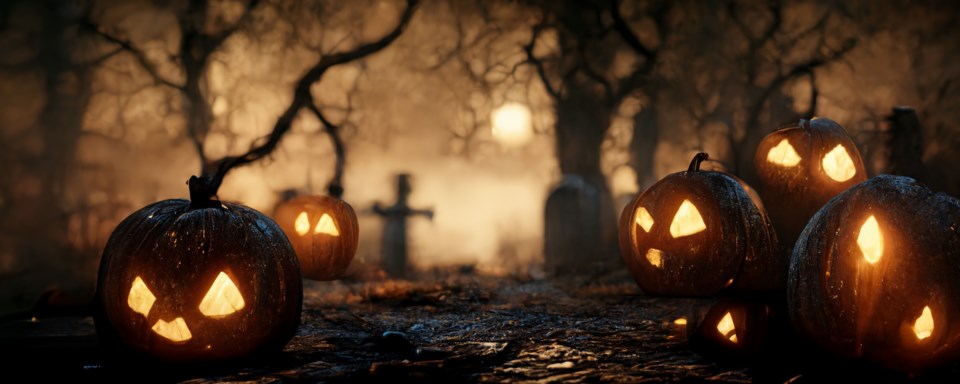As Halloween approaches, the excitement of children is evident across sa国际传媒.
Our focus over the past two years has not been placed on costumes and masks, and we spent a long time discussing the benefits and drawbacks of a very different kind of face covering. On Monday, Canadian kids will return to their usual routine, knocking on the doors of their neighbours to seek candy.
In 2019, Research Co. and Glacier Media looked at the perceptions of Canadians on an idea that, at the time, was getting significant attention in the United States. Observing Halloween on a weekday can create problems for people of all ages. Employees are late to work recovering from parties, and children are overstimulated with a combination of adrenaline and glucose that is not customary on other school nights.
When we-asked this year, support for change is growing. Across the country, 44 per cent of Canadians agree with moving Halloween to the last Saturday of October, instead of observing it every year on the same date (October 31).
At this point, the idea of a “Saturday Halloween” becoming a permanent feature of Canadian life is not universally endorsed. Support is highest in Ontario (48 per cent) and Atlantic sa国际传媒 (47 per cent), followed by British Columbia (44 per cent), Alberta (43 per cent), Quebec (42 per cent) and Saskatchewan and Manitoba (33 per cent).
The notion of observing Halloween on the last Saturday of October is up four points since 2019, while opposition to this modification is down four points. While there is no clear consensus about what to do as far as the date, negative connotations related to specific costumes have grown markedly over the past three years.
We again asked Canadians to ponder the suitability of specific costumes that could be worn by children or adults on Halloween. Many schools have stringent rules to avoid anything that can be deemed culturally insensitive, but office parties lack the same level of attention to what people can wear.
Some costumes are clearly undesirable, regardless of the age of the prospective wearer. Three in five Canadians think a costume that represents an ethnic stereotype is inappropriate for kids (60 per cent, up three points) and adults (also 60 per cent, up one point). Majorities feel the same way about costumes that change the colour of the wearer’s skin, whether it is a kid (57 per cent, up six points) or an adult (60 per cent, up seven points).
We see a majority of Canadians of European descent (52 per cent) expressing dismay at the possibility of a child’s Halloween costume that features ethnic stereotypes. This view is shared by larger proportions of Canadians whose ancestries are East Asian (63 per cent), South Asian (65 per cent) and Indigenous (68 per cent).
The idea of carrying toy or replica weapons on Halloween is also off-putting, with half of Canadians eschewing such a costume for children (51 per cent, up four points) and adults (50 per cent, up one point).
Two other types of costumes are not as controversial. Wearing a costume that refers to a culture that is not the child’s own is perceived negatively by 43 per cent of Canadians (up five points). If an adult does this, the perception of inappropriateness rises to 50 per cent (up six points).
While costumes that represent a social stereotype, such as a jailbird or a vagabond, are the least contentious, we still identify a sizable number of detractors.
About two in five Canadians would consider this an inappropriate course of action for a child (40 per cent, up seven points) and for an adult (41 per cent, up five points).
Finally, we reviewed the feelings of Canadians towards the food and beverage offerings of the season. Pumpkin pie is a nationwide favourite, with 66 per cent of Canadians saying they like it. Albertans are the most enthusiastic (78 per cent) while Quebecers are at the other end of the spectrum (55 per cent).
Pumpkin spice flavoured beverages did not fare as well, with 44 per cent of Canadians enjoying them and 47 per cent disliking them. There is a deep generational divide, with most Canadians aged 18 to 34 welcoming the existence of these concoctions (53 per cent).
Candy corn, a staple of trick or treat bags for more than a century, is also divisive. Almost half of Canadians dislike it (48 per cent) while more than two in five (42 per cent) enjoy it. Men (45 per cent) are more likely to like candy corn than women (37 per cent).
Our survey shows that there is a bit of momentum for switching Halloween to Saturdays, even if the group that advocates for this change does not represent a majority of Canadians. The country has become less accepting of costumes that could be deemed offensive. And children, if you are reading this, Dad is coming for your candy corn. Mom probably won’t care.
Mario Canseco is president of Research Co.
Results are based on an online study conducted from October 22 to October 24, 2022, among 1,000 adults in sa国际传媒. The data has been statistically weighted according to Canadian census figures for age, gender and region in sa国际传媒. The margin of error – which measures sample variability – is plus or minus 3.1 percentage points, 19 times out of 20.
